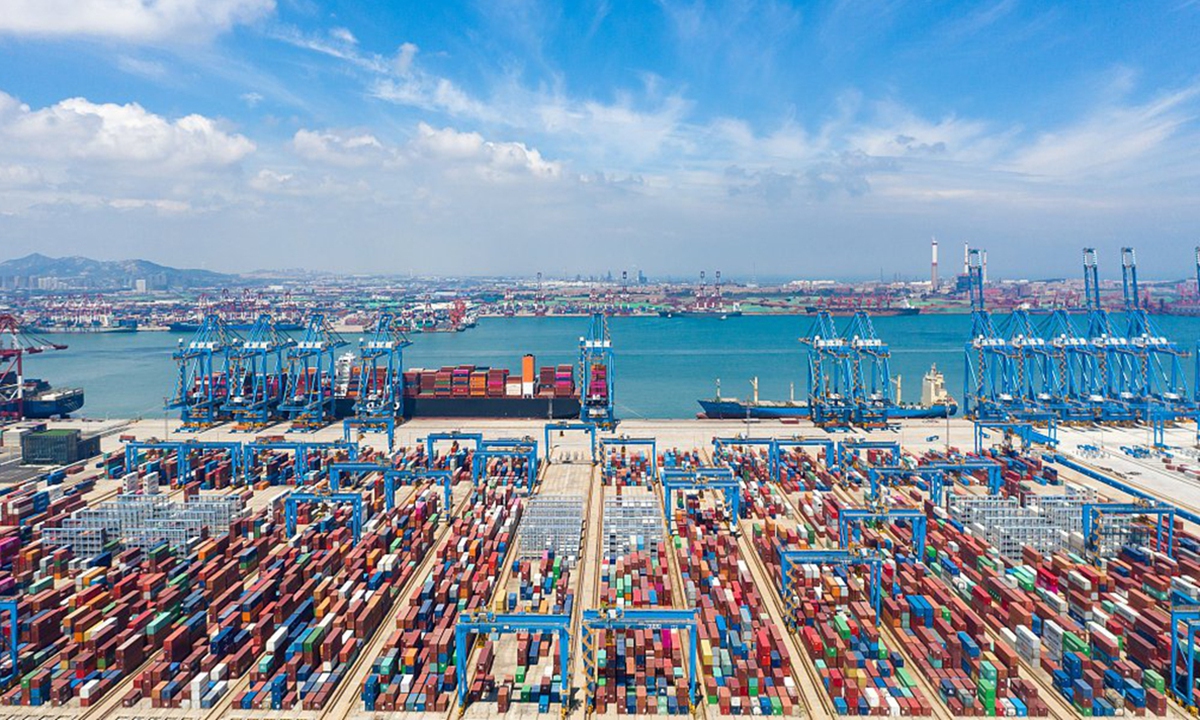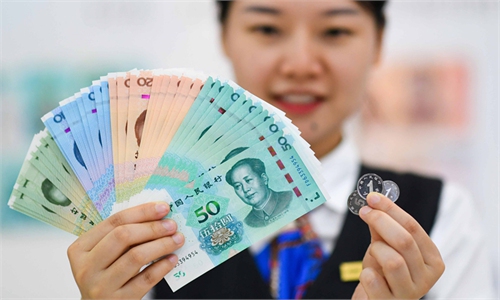Upturn of China’s foreign trade not just a ‘positive surprise’: Global Times editorial

China trade economy File photo: VCG
According to data released by China's General Administration of Customs on Thursday, the country's imports and exports of goods in the first quarter (Q1) of 2023 reached 9.89 trillion yuan (about $1.44 trillion), up 4.8 percent year-on-year. The growth rate was accelerated by 2.6 percentage points from that of the fourth quarter last year. This is a steady and positive start to 2023. What is more notable is that imports and exports "returned to the positive territory" in February, and exports in March increased by about 23.4 percent from a year ago (about 14.8 percent year-on-year in dollar terms). This has ended the declining trend of the previous five consecutive months. Some foreign media outlets that follow China's economy have also highlighted that China's export growth in March is a "positive surprise," saying that the rapid recovery of China's exports is a sign of economic recovery.The Q1's foreign trade data is particularly eye-catching, which is related to two backgrounds. First, the increasing risk of a global recession from the second half of last year and a slower-than-expected demand have kept China's exports under pressure. Uncertainty about the export situation is even considered as one of the biggest hidden dangers for China's economic recovery this year. Some even believe that it would be acceptable enough if this year's foreign trade "didn't drag down economic growth." Second, empty containers were stacked at the ports in the first two months of 2023 due to multiple factors, which had made many people concerned and worried about China's foreign trade. This is why the data this time is a surprise to many. At the same time, the foreign trade data that bounces back from a drop also means that our economic recovery has one more booster, and the momentum has been further consolidated.
It should be said that against the backdrop of weak external demand, and increased risks in protectionism and geopolitics, it was particularly difficult for foreign trade to achieve such results in Q1. On one hand, this reflects the results of the efforts of the whole country "striving for economic growth." On the other hand, it also shows some trends of China's economic development.
Since the end of last year, foreign trade has been facing factors like uncertainty, instability and unbalance. We have strengthened cross-cycle adjustment and policy support for imports and exports. We have prepared for the implementation of the Regional Comprehensive Economic Partnership Agreement. We have also actively organized various exhibitions and exchange meetings. After adjusting the measures for epidemic prevention and control, various regions quickly organize enterprises to "go abroad and grab orders" to stabilize the foundation of foreign trade. The number of Chinese enterprises that have actual performance in foreign trade sees year-on-year growth of 5.9 percent in Q1, reflecting the vitality and hard work of China's foreign trade personnel. Some experts who have conducted on-the-spot research on the front line of foreign trade have expressed that while the outside world has a pessimistic view of the import and export situation, they have not felt so much pessimism from some foreign trade centers and front-line businessmen engaging in foreign trade. Instead, these people have always been seeking directions and paths to break through amid changes.
In addition, from the valuable fact that foreign trade has bucked the trend, we can once again prove three basic views about the Chinese economy: First, the large-scale, comprehensive, and competitive manufacturing system is where our confidence to respond to global market fluctuations lies. Second, the development potential of the Chinese economy still shouldn't be underestimated. The export of "three new items" - electric passenger vehicles, lithium batteries, and solar cells - has increased by 67 percent, indicating that our advantages in emerging industries and fields are still constantly being strengthened and consolidated. Finally, under the unstable global economy, China continues to exert its ability to stabilize the economic ecology of its periphery and even a wider range. This can be seen from the fact that China's Q1 imports and exports to ASEAN and countries along the Belt and Road have seen a year-on-year increase of 16.1 percent and 16.8 percent, respectively.
Of course, in addition to surprises, the foreign trade data also indicates some unfavorable factors that deserve attention. For example, the continued decline in exports to countries such as the US reflects the continuing risk of weakened external demand. In addition, the problem of insufficient demand reflected in the slow recovery of import growth still needs to be addressed with great effort. It shouldn't be ruled out that foreign trade may face greater challenges and difficulties in the future, but the strong resilience, great potential and adequate vitality of the Chinese economy remain unchanged, and our efforts to maintain the positive momentum of foreign trade will not stop.
In fact, not only toward foreign trade, but our attitude toward the entire economic development should also be the same. As we all know, after experiencing uncertain factors such as the pandemic and geopolitical conflicts, the public has high expectations for economic recovery and rapid growth, and any movement in the economic field will be subject to many interpretations. In addition, there are people who have been badmouthing the Chinese economy on the international stage. Although they have been repeatedly slapped in the face, they are always waiting for an opportunity to create a pessimistic sentiment about the Chinese economy. However, facts have repeatedly proven that the Chinese economy is a ship that can withstand wind and waves. For us, we encounter difficulties every year. But we can always achieve new developments in overcoming difficulties. This is China's strength and also confidence.

